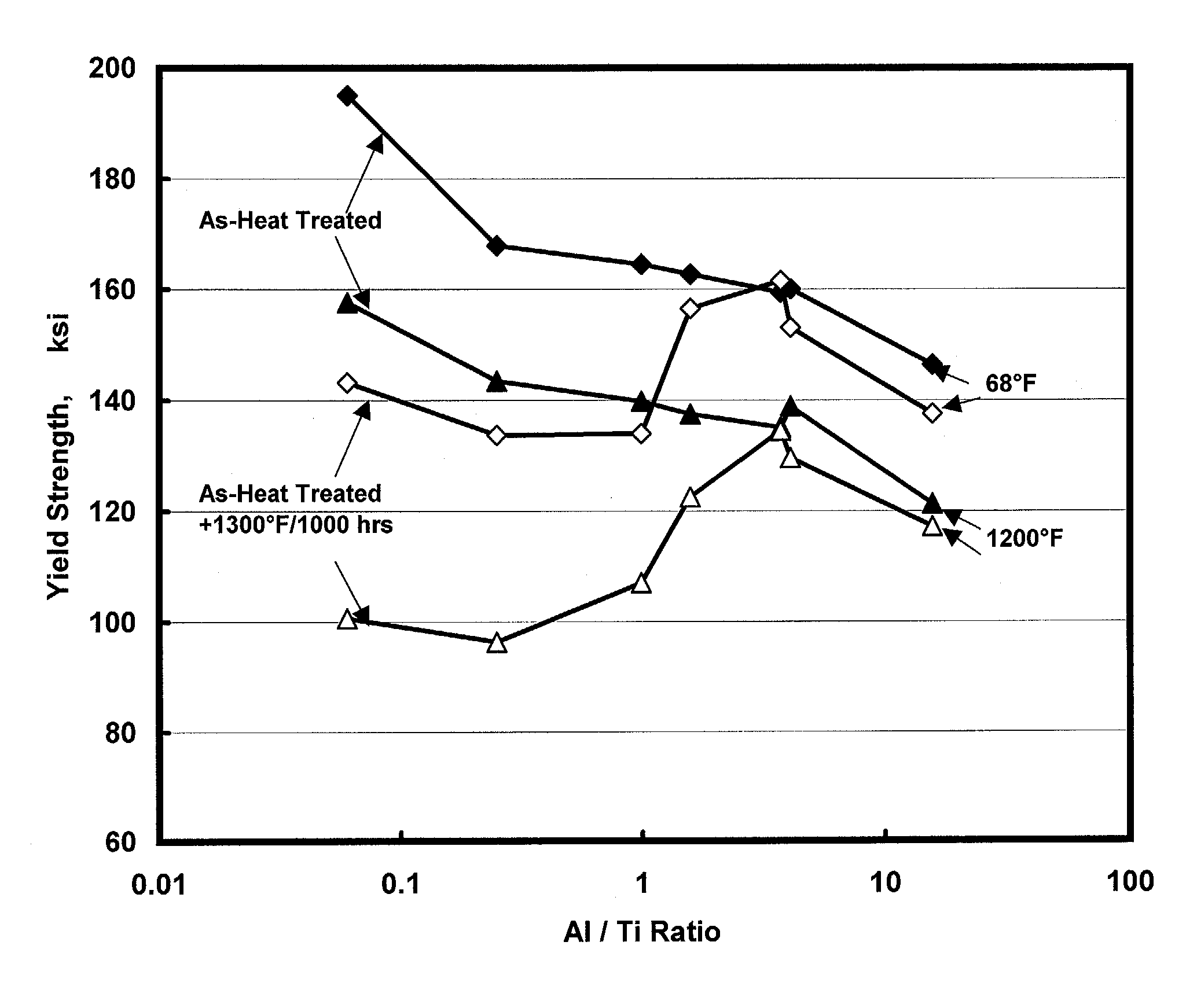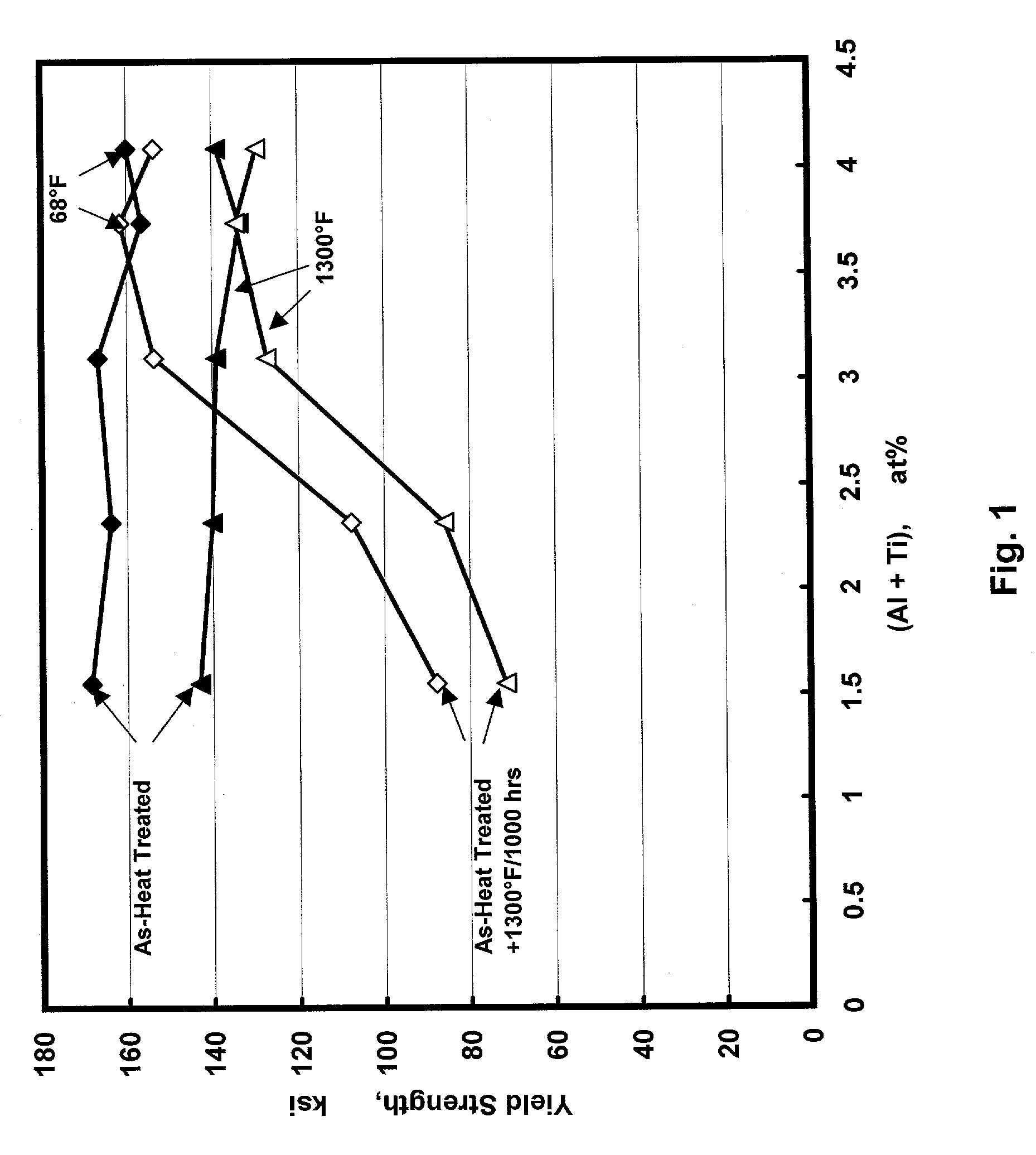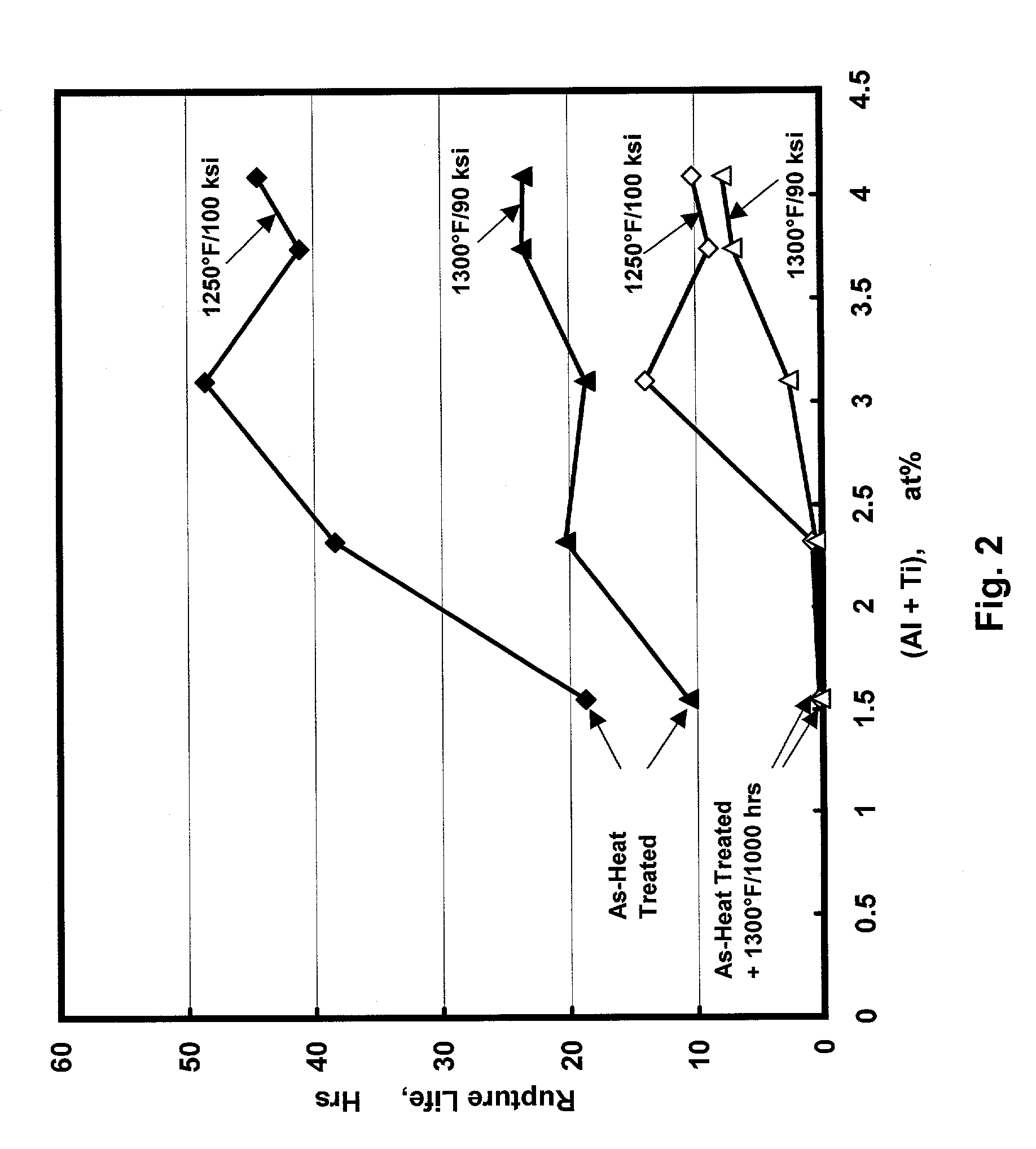Nickel-base alloy
a technology of base alloy and nickel, which is applied in the field of nickelbase alloy, can solve the problems of high cost, long and costly process, and low thermal stability of .gamma phase, and achieve the effects of high manufacturing cost, high temperature capability, and high thermal stability
- Summary
- Abstract
- Description
- Claims
- Application Information
AI Technical Summary
Benefits of technology
Problems solved by technology
Method used
Image
Examples
Embodiment Construction
[0027] The present invention relates to nickel-base alloys that include advantageous amounts of aluminum, titanium and niobium, advantageous amounts of boron and phosphorous, and advantageous amounts of iron, cobalt, and tungsten. According to one particular embodiment of the present invention, the nickel-base alloy comprises, in weight percent: up to about 0.10 percent carbon; about 12 up to about 20 percent chromium; 0 up to about 4 percent molybdenum; 0 up to about 6 percent tungsten, wherein the sum of molybdenum and tungsten is at least about 2 percent and not more than about 8 percent; about 5 up to about 12 percent cobalt; 0 up to about 14 percent iron; about 4 percent up to about 8 percent niobium; about 0.6 percent up to about 2.6 percent aluminum; about 0.4 percent up to about 1.4 percent titanium; about 0.003 percent up to about 0.03 percent phosphorous; about 0.003 percent up to about 0.015 percent boron; nickel, and incidental impurities. According to the present invent...
PUM
| Property | Measurement | Unit |
|---|---|---|
| weight percent | aaaaa | aaaaa |
| weight percent | aaaaa | aaaaa |
| temperatures | aaaaa | aaaaa |
Abstract
Description
Claims
Application Information
 Login to View More
Login to View More - R&D
- Intellectual Property
- Life Sciences
- Materials
- Tech Scout
- Unparalleled Data Quality
- Higher Quality Content
- 60% Fewer Hallucinations
Browse by: Latest US Patents, China's latest patents, Technical Efficacy Thesaurus, Application Domain, Technology Topic, Popular Technical Reports.
© 2025 PatSnap. All rights reserved.Legal|Privacy policy|Modern Slavery Act Transparency Statement|Sitemap|About US| Contact US: help@patsnap.com



